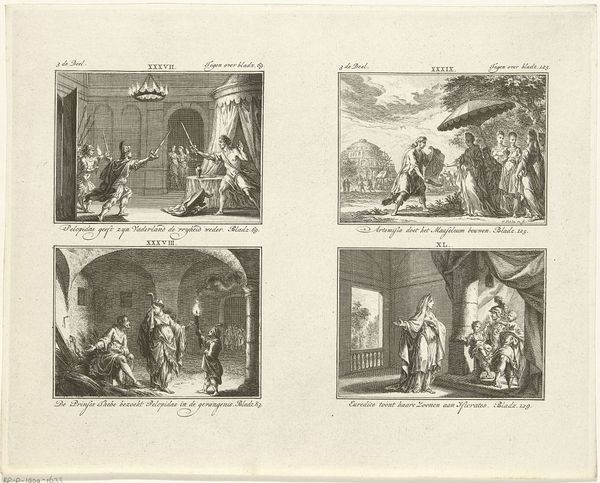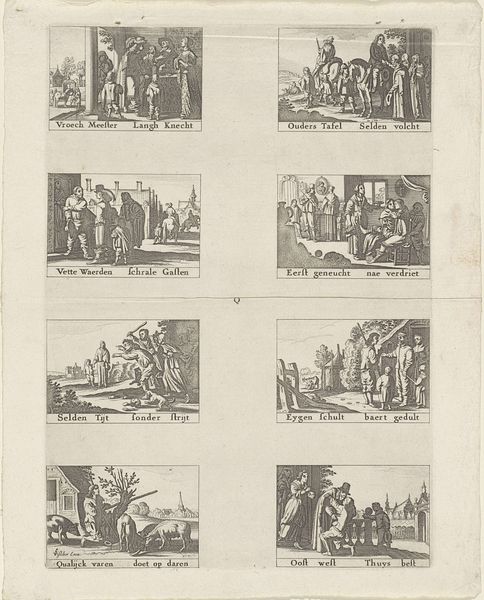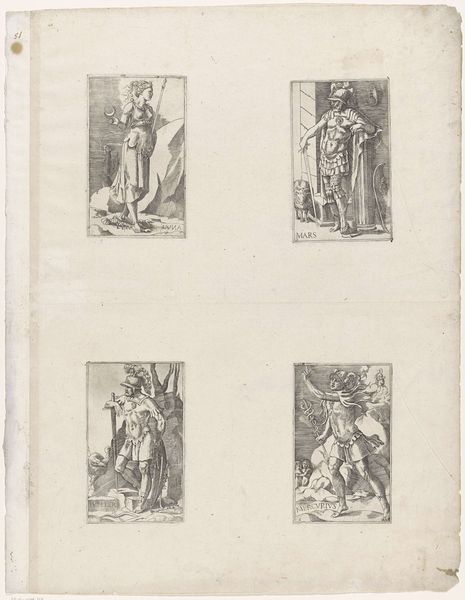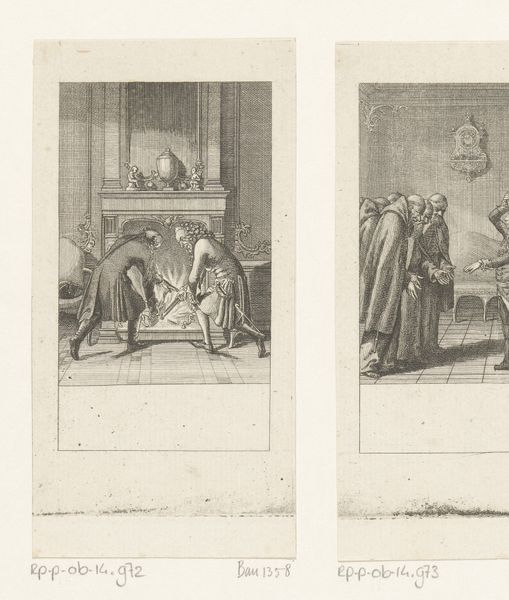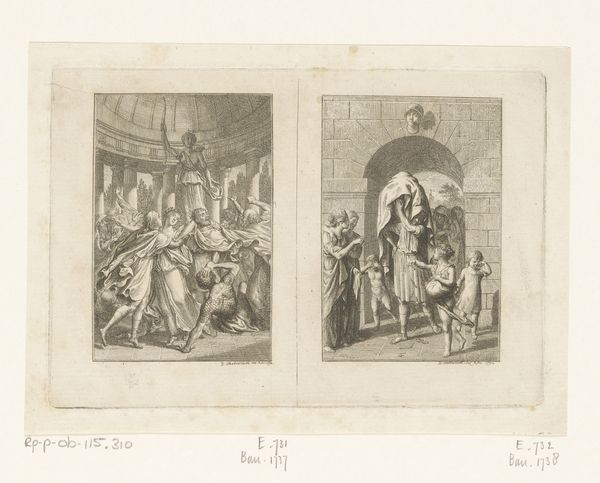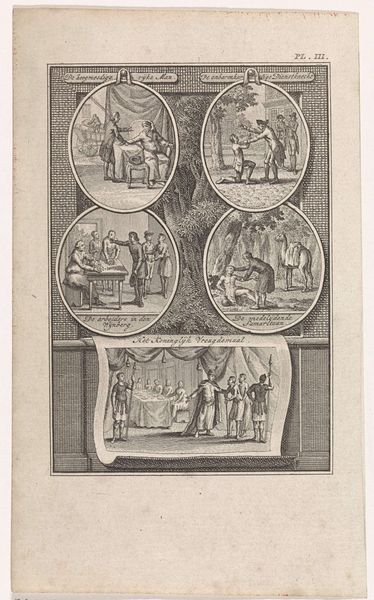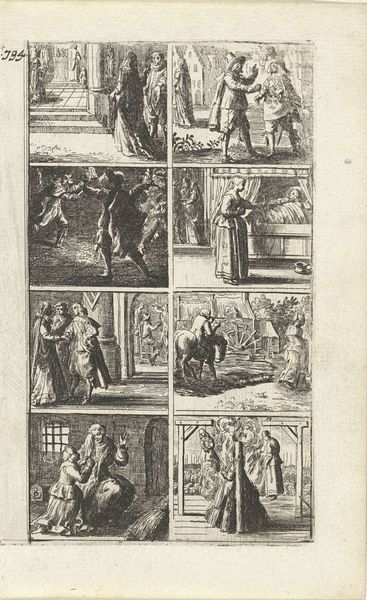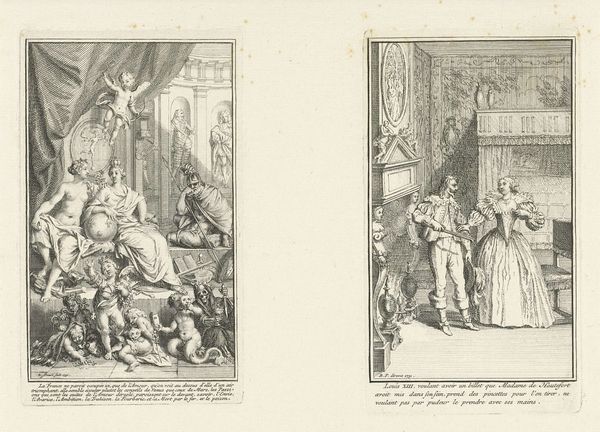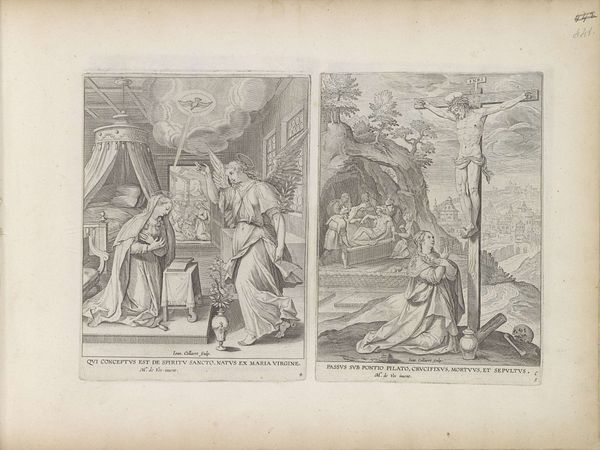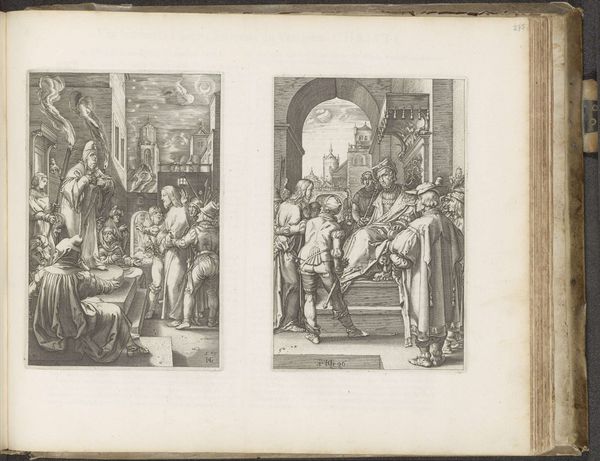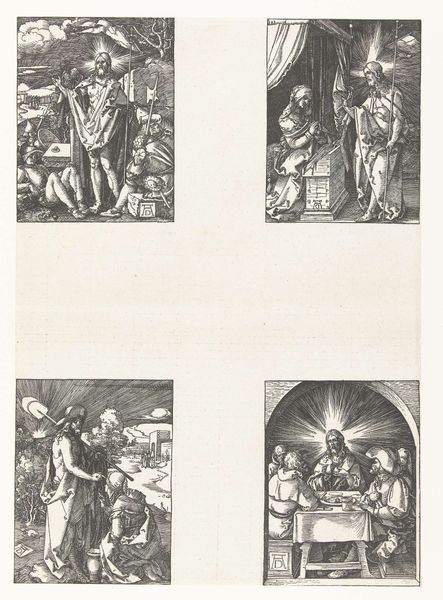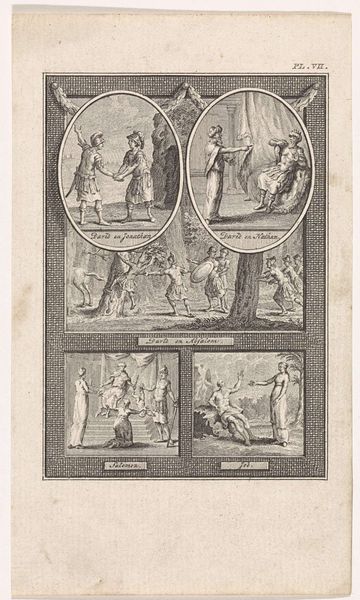
De laatste vier episoden uit de Rechtspraak van graaf Willem III 1600 - 1652
0:00
0:00
print, engraving
#
narrative-art
#
baroque
# print
#
old engraving style
#
genre-painting
#
history-painting
#
engraving
Dimensions: height 170 mm, width 251 mm
Copyright: Rijks Museum: Open Domain
Curator: Right now, we're looking at an engraving titled "De laatste vier episoden uit de Rechtspraak van graaf Willem III," or "The Last Four Episodes from the Justice of Count William III." It was created anonymously sometime between 1600 and 1652. Editor: It feels almost like a morality play. Starkly rendered, very black and white... each of those small scenes, little moments frozen in time. Reminds me of pages from an old book of fables. Curator: That’s astute. These sequential images do depict morality lessons, illustrating legal proceedings and their consequences in the time of Count William III. It shows judgment and its earthly consequences. This print would have circulated broadly, educating the public about the era's justice system. Editor: I notice the recurrence of key symbols—the scales of justice, of course, but also more subtle things like the overturned table and broken chains that show the consequences of not respecting the law. The lower right scene is really powerful – the prisoner returning to his family. Curator: Yes, such imagery shaped public perception of justice. Prints like these functioned as accessible political and social commentary. They offered interpretations of justice and encouraged adherence to established authority, but also allowed a critique of the legal structures of the time. It's really about the intersection of justice and the socio-economic standing of individuals. Editor: I agree; while appearing didactic, it feels deeply humanistic. The artist understands how such visual emblems resonate and influence us over centuries – that the essence of a symbol like justice carries an incredible emotional charge. The return to family becomes the emblem of social forgiveness, doesn't it? Curator: Precisely. And thinking about who saw this—prints had incredible reach at that time. Understanding where these images appeared really highlights the public role of art in the early modern period. Editor: Thinking of these repeated emblems, it underlines the power of the visual vocabulary—morality gets visually coded across time. These aren't just historical documents, they reveal a persistent cultural desire for equity and accountability. Curator: It offers insights into an early modern world wrestling with issues of law and order, much like our own time. Editor: Absolutely; visual reminders of the law remain potent across generations.
Comments
No comments
Be the first to comment and join the conversation on the ultimate creative platform.
